Love it or hate it, High Dynamic Range, better known as HDR, is the topic of our first post here in “Trains and Modern Photography.” Many folks, who are quite vocal (for example, the blog I Hate Your HDR), find fault in the often overdone and completely fake appearance of some HDR photos. However, if you do HDR right, and in a subtle way, it can make a great photo.
The goal of HDR photography is essentially to get more detail in the shadows and lights of your photo. This concept, however, long predates digital photography. Back in the days of black and white film photography, the film could capture a wider range of details than could be displayed in a print. Thus using darkroom techniques like dodging and burning, one could bring out more details in highlights and shadows. Ansel Adams was considered a master in techniques like this, and his photo Moonrise is considered a prime example. Compare below, the “straight print” of the photo with no modifications, versus the darkroom edited version. Beyond the sky being darkened, which was clearly a stylistic choice, the clouds and moon which were bright and nearly blown out gain more detail. The somewhat washed out foreground gains contrast and detailing. These are some of the very same things that good HDR photography attempts to do.
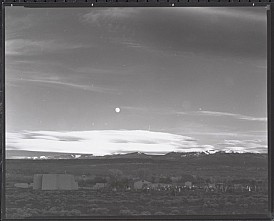 Â
 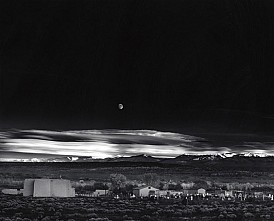 Â
Â
Moonrise by Ansel Adams, before and after darkroom editing to gain more dynamic range.
In order to do HDR, one must use exposure bracketing (which is often a feature you’ll find in your DSLR). Basically, you’ll take three photos of a subject, one at a normal exposure, then one with less exposure (yielding a darker photo, with details in the highlights), and another with more exposure (yielding a brighter photo, with details in the shadows). Later on you will combine the three photos in computer to blend them together and create a single HDR photo.
When to use High Dynamic Range?
Photographing Sunsets/Sunrises
If you’ve ever looked to try and shoot a train at sunset or sunrise, you’ll often find that the sky is very bright, and the ground is very dark. Because of this, if you get a good exposure of the train, you’ll often find that the sky is completely blown out. These are the times that HDR photography is perfect. The title image for this post, an M train approaching Marcy Avenue station in Brooklyn, was taken after sunset when the sky is brightly colored and brighter than the dark foreground. HDR allows the background of the sky to really shine, without the train being shadowed in darkness.
Another example is this shot of an Acela train taken near Sherwood Island State Park on the New Haven Line at sunset:
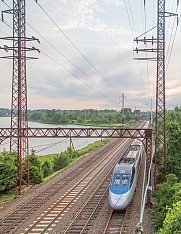 Â
 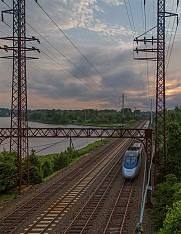 Â
 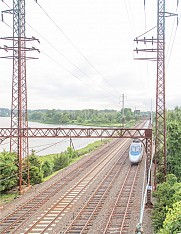
Settings: f/5.6, ISO-640, 1/250, 1/800, and 1/80 seconds
Now purists might say that it is possible to compensate for that light difference between the sky and ground in-camera using a graduated neutral-density filter. Although true, there are many instances where a filter will not work, especially when dealing with windows…
Photographing inside anything that has windows
While a sky is always in the same place, and makes it possible to use a filter, it is impossible to use the technique when photographing anything inside that has windows. Say you’re inside a passenger coach and you want to take a picture. If you expose the inside of the coach properly, you’ll likely find that the vista outside the train is completely blown out. HDR can compensate for this, yielding a final photo where you can see everything both inside and outside the train.
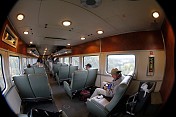 Â
 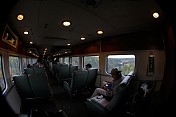 Â
 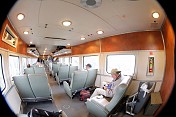
Settings: f/10, ISO-1250, 1/25, 1/80, and 1/8 seconds
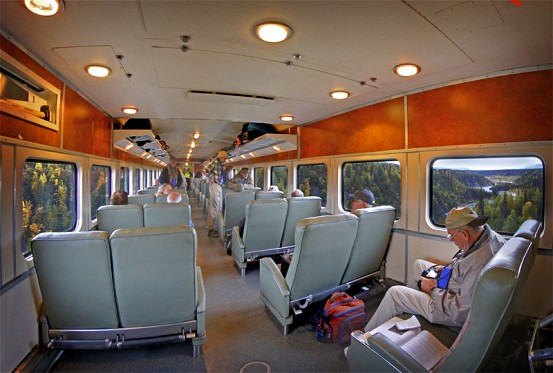
Combined HDR image after fisheye distortion correction and cropping.
Some long exposure night photography
When taking long exposure photos at night, you may find that some lights are far brighter than others, and by using HDR you can compensate for this. In the below example, taken at Hoboken Terminal, the locomotive is for the most part unlit. Thus to get a decent exposure of it, I had to leave my shutter open for a full six seconds. Meanwhile, the light rail platform behind the locomotive is well lit. In a six second exposure, it is completely blown out. Using HDR, I was able to get a decent exposure on the locomotive, the background, and even the new World Trade Center in the far distance.
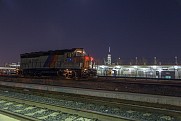 Â
 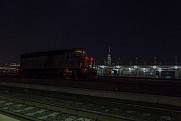 Â
 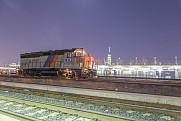
Settings: f/4, ISO-400, 1.6, 1/2, and 6 seconds
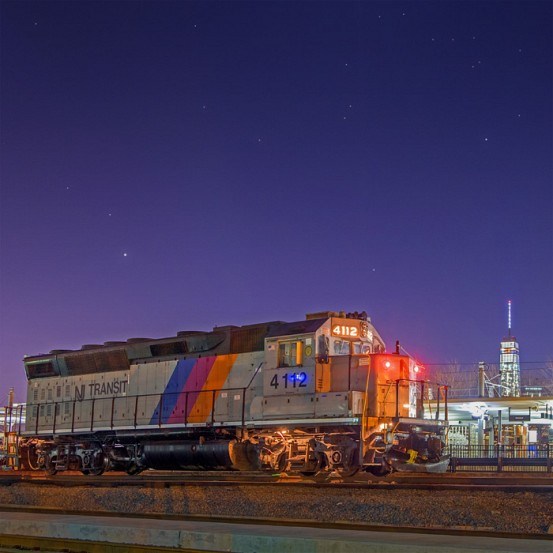
Combined HDR image after cropping.
How do I combine my 3 photos into an HDR photo?
For HDR, I definitely recommend Photomatix Pro, because of a lot of cool features that it has. Current HDR software like Photomatix can accommodate for slight movement in your bracketed photos, which will most likely be the case if you’re not shooting on a tripod. The best feature of Photomatix, which would be heavily used by a railfan, is the moving object compensation. Unless you’re shooting a train that isn’t moving, when you bracket the train will be moving across the frame. By highlighting the train in the photo, Photomatix can appropriately blend the best position of the train for you.
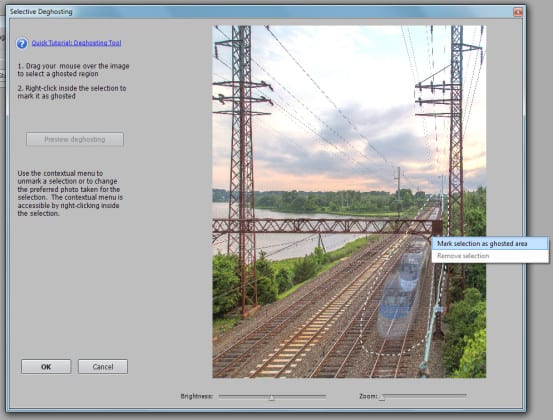
Note the “ghosted” image of the train – since it was moving it appears in three different places over the three exposures. Simply highlight the train with your mouse in Photomatix and right click on it to indicate a “ghosted area.”
Anyway, that is about it for today’s post. HDR is the type of subject that almost everyone has an opinion on, and usually a pretty strong one. I figured it would get people talking, which I think is the goal here. For one, many railfans are unfamiliar with the deghosting tools available, and assume HDR is not possible with a moving object. Others are pretty certain that you can’t shoot handheld and do HDR, which is also possible since modern programs can match features and crop out the edges from the minimal movements that your hand makes when shooting the three exposures.
Have you ever used HDR for any train photos? Do you still hate HDR after reading this? Post in the comments below!


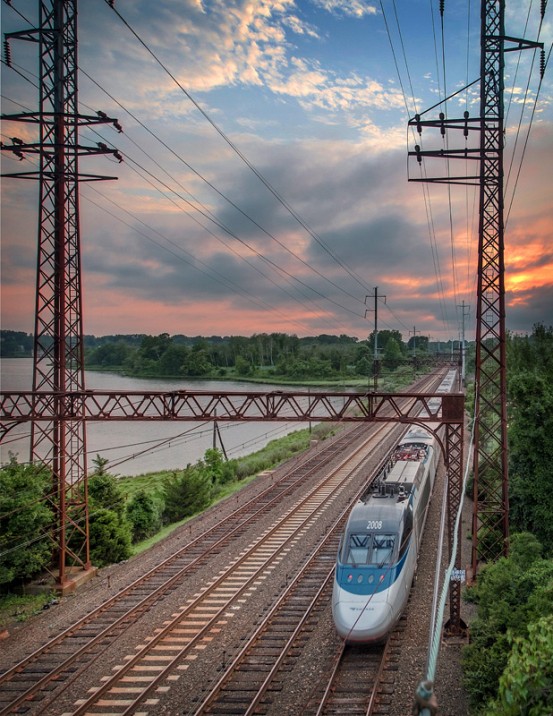
Thanks for the tips, I haven’t tried it myself but have thought about it but didn’t know of an appropriate program. You have done all of my leg work, now I just need to buy the program.
Thanks, Frank. You are definitely one of my favorite rail photographers… Your dedication and the length you’ll go in order to get some amazing shots is really admirable. I think that you’ll find this technique quite useful if you ever go out to get another train/aurora shot.
I’m not a huge fan of “obvious” HDR. It can make for cool art, but I tend to like photos that are more realistic.
However your article does a great job of pointing out that a lot of well done HDR doesn’t look like HDR. Used that way it can obviously be a good tool for making pictures that match what the eye sees.
Great writeup on a controversial and oft-misunderstood topic, Emily. I have nothing against the HDR technique (I’ve used it myself), my issue is with poor results. I shoot RAW and often use the leeway it gives me for dodging/burning and curves tweaks. I’m sure many purists would find fault in my work…there’s one photographer in my local photography group who certainly does!
Well-done “true” HDR (composite images), while I don’t shoot it, is a style I enjoy. You have a clearly defined style to your work, which is something a lot of photographers struggle to find. I think I’d recognize a real Emily Moser photo even without your name attached!
‘Straightening out the fish-eye’ is neat!
Your photography has always been inspiring. Thanks for the tips!.